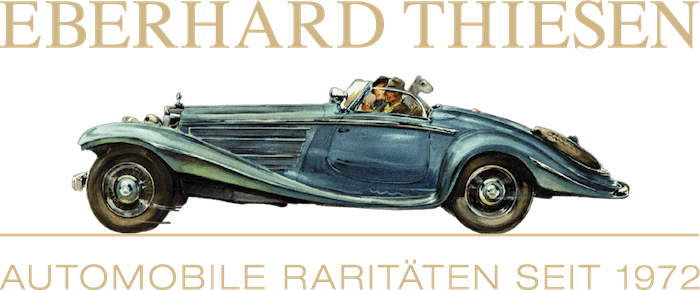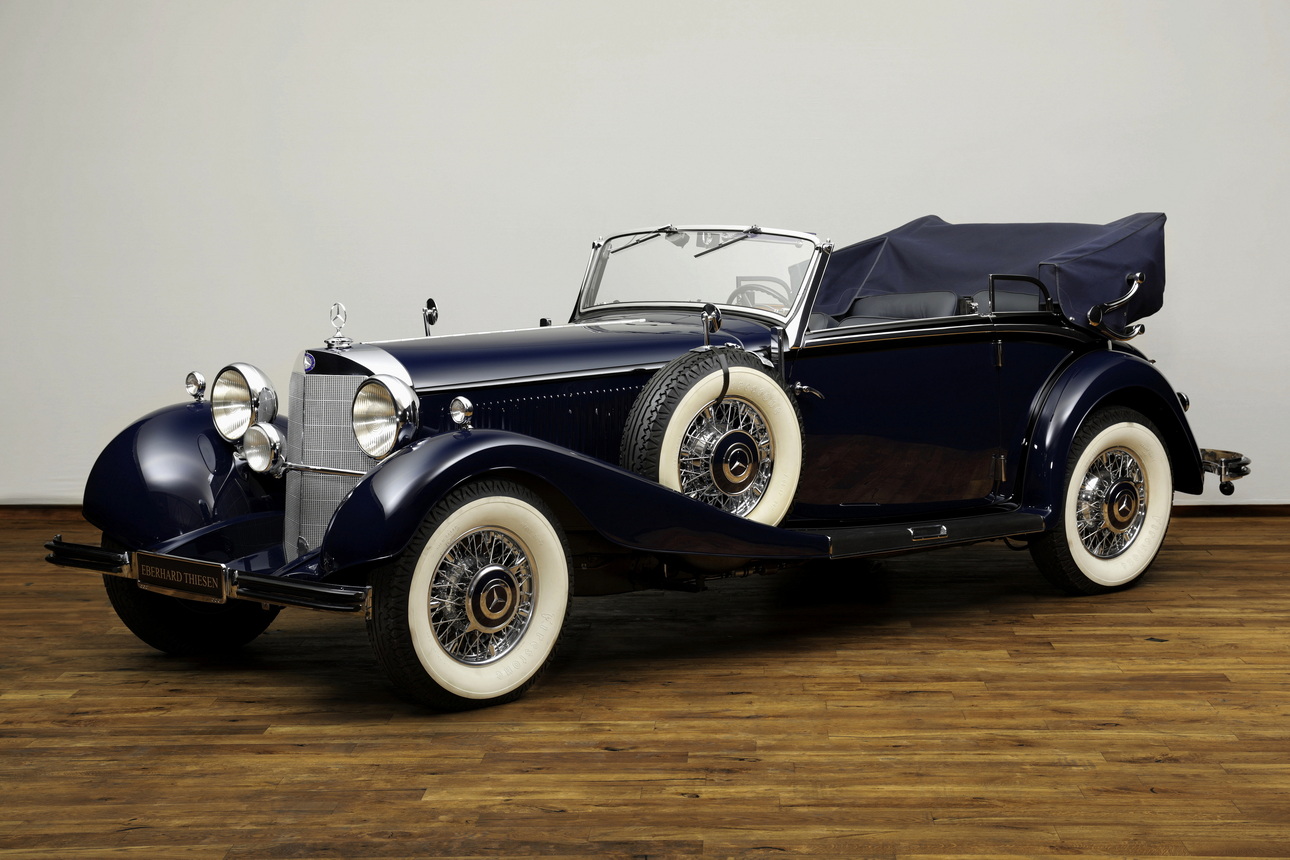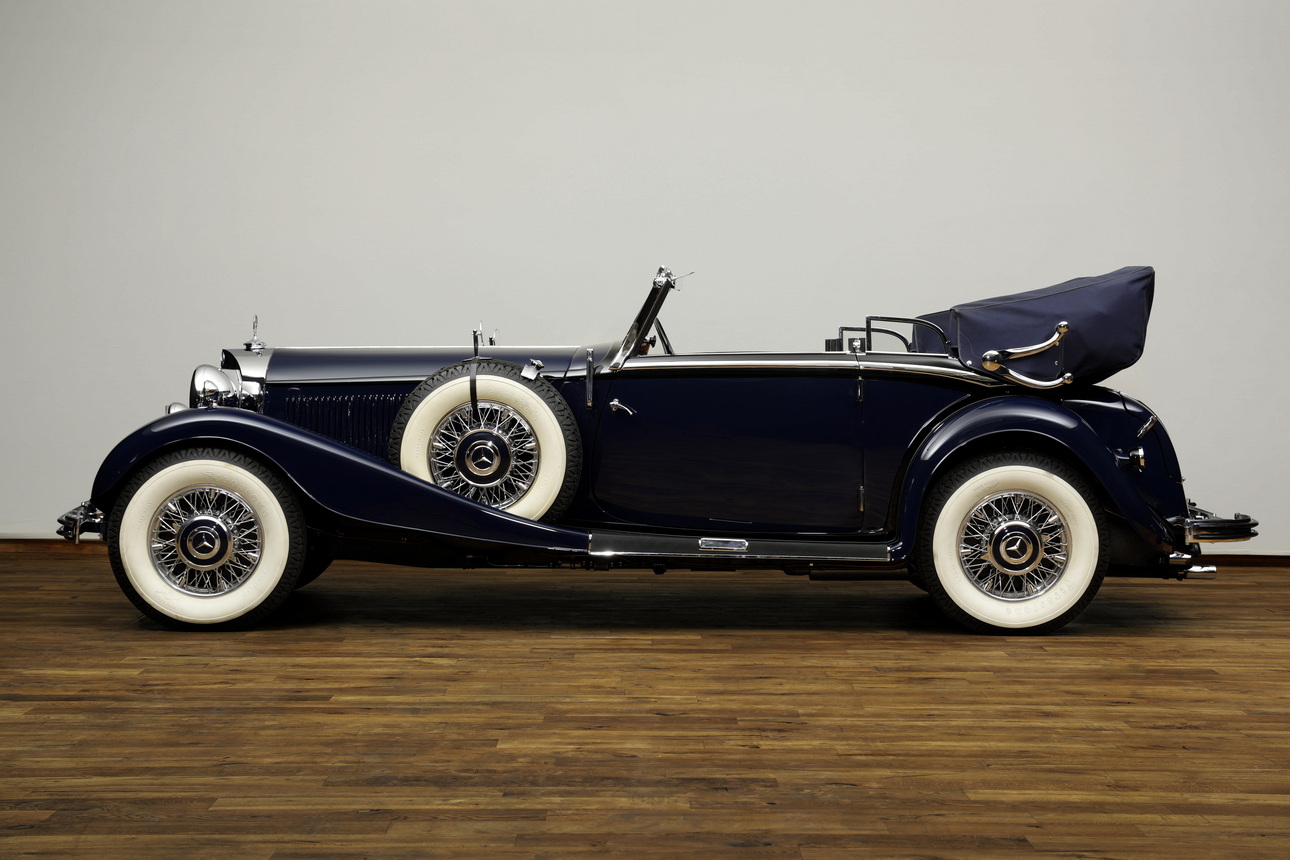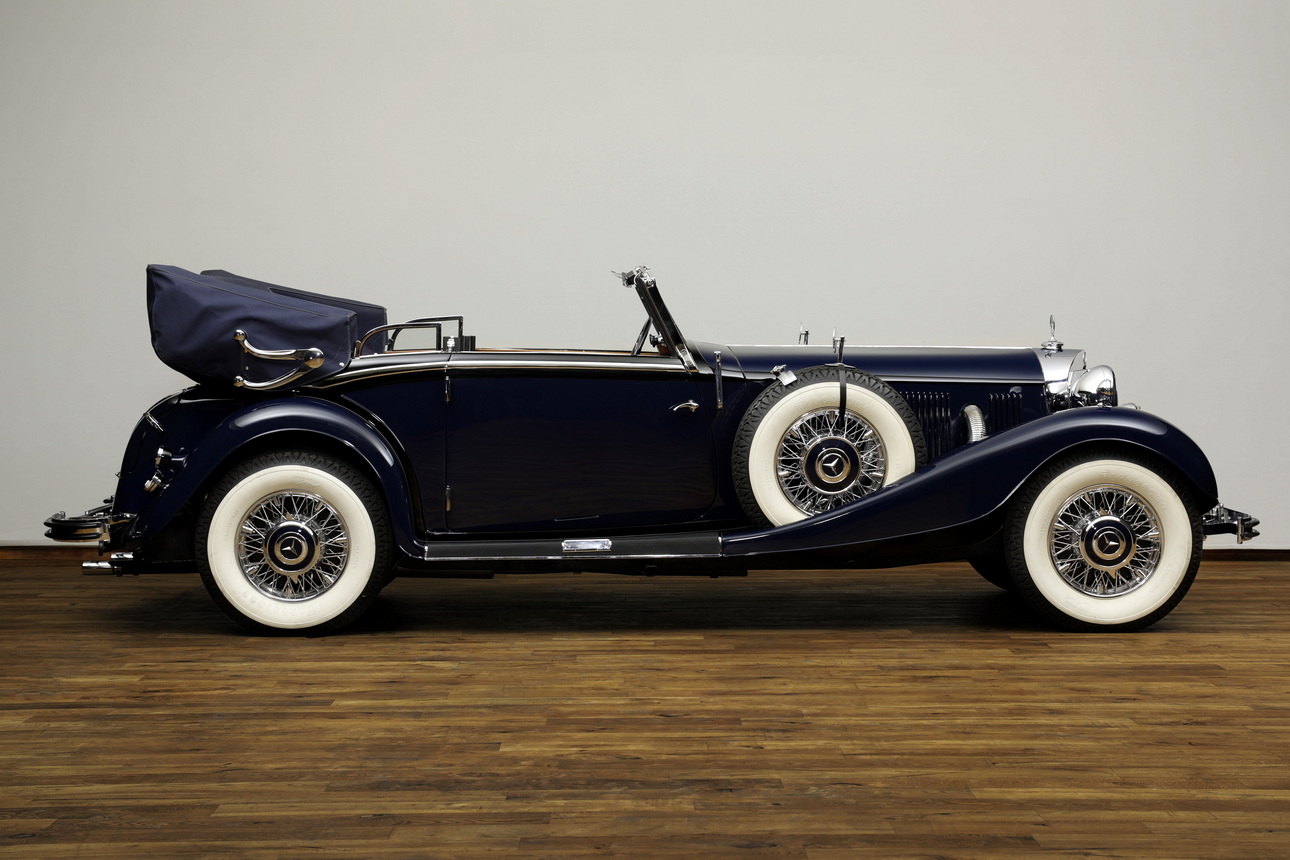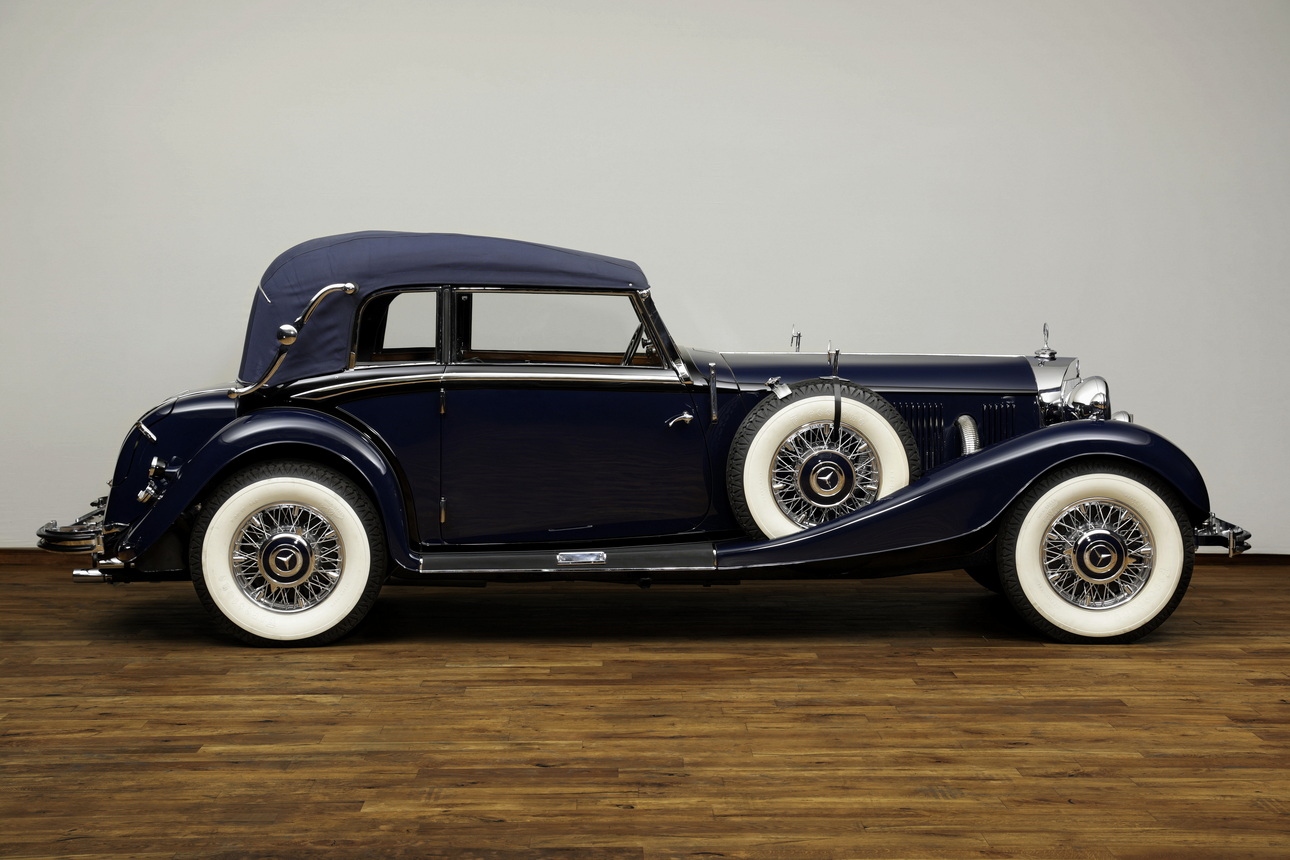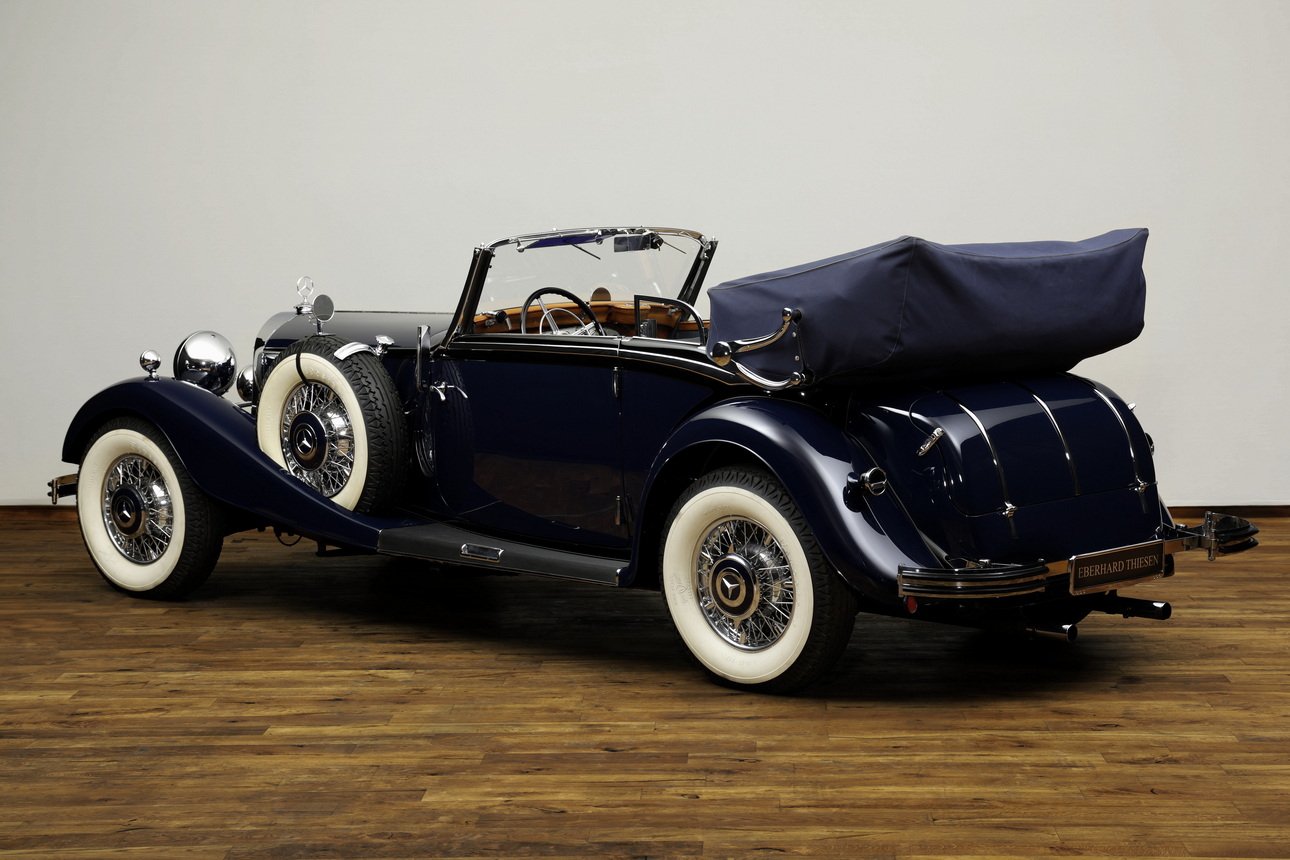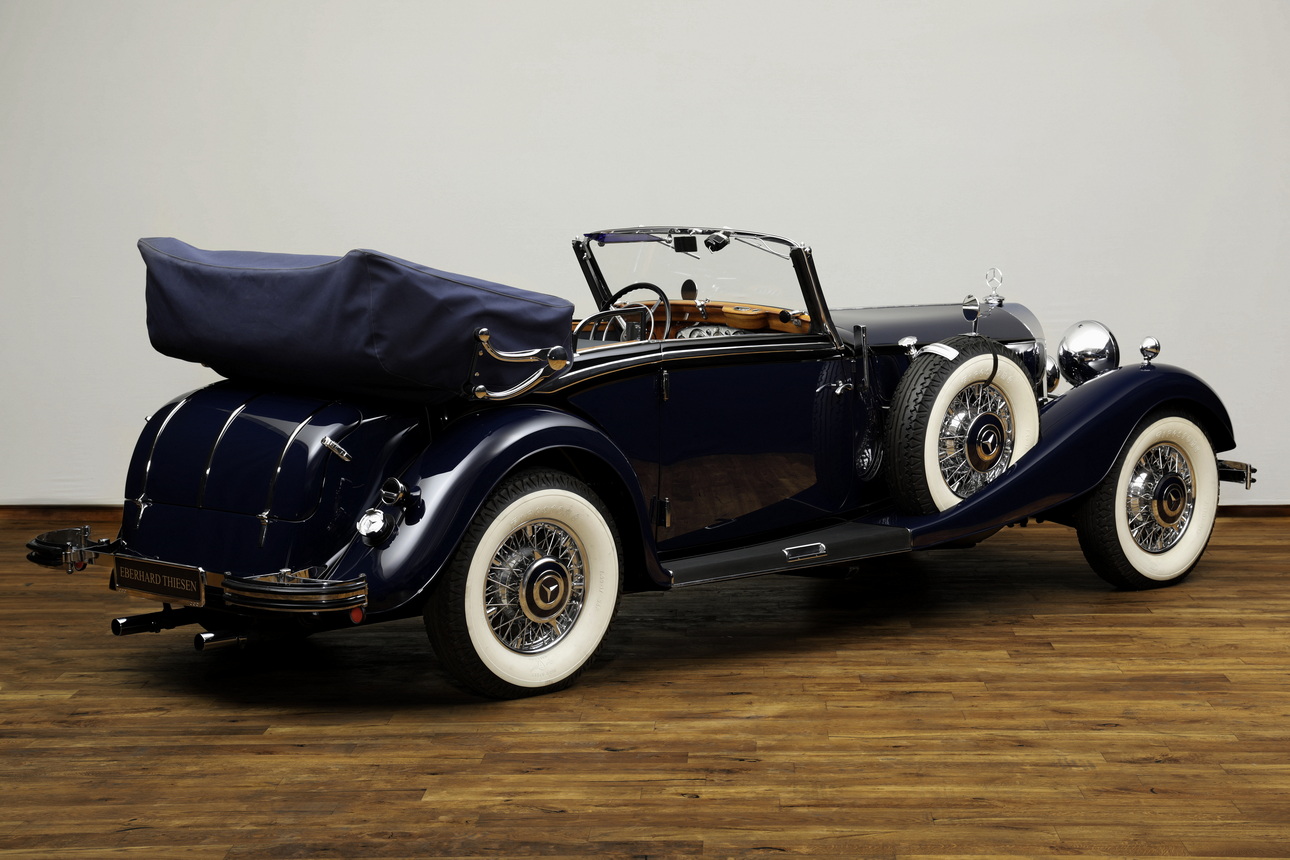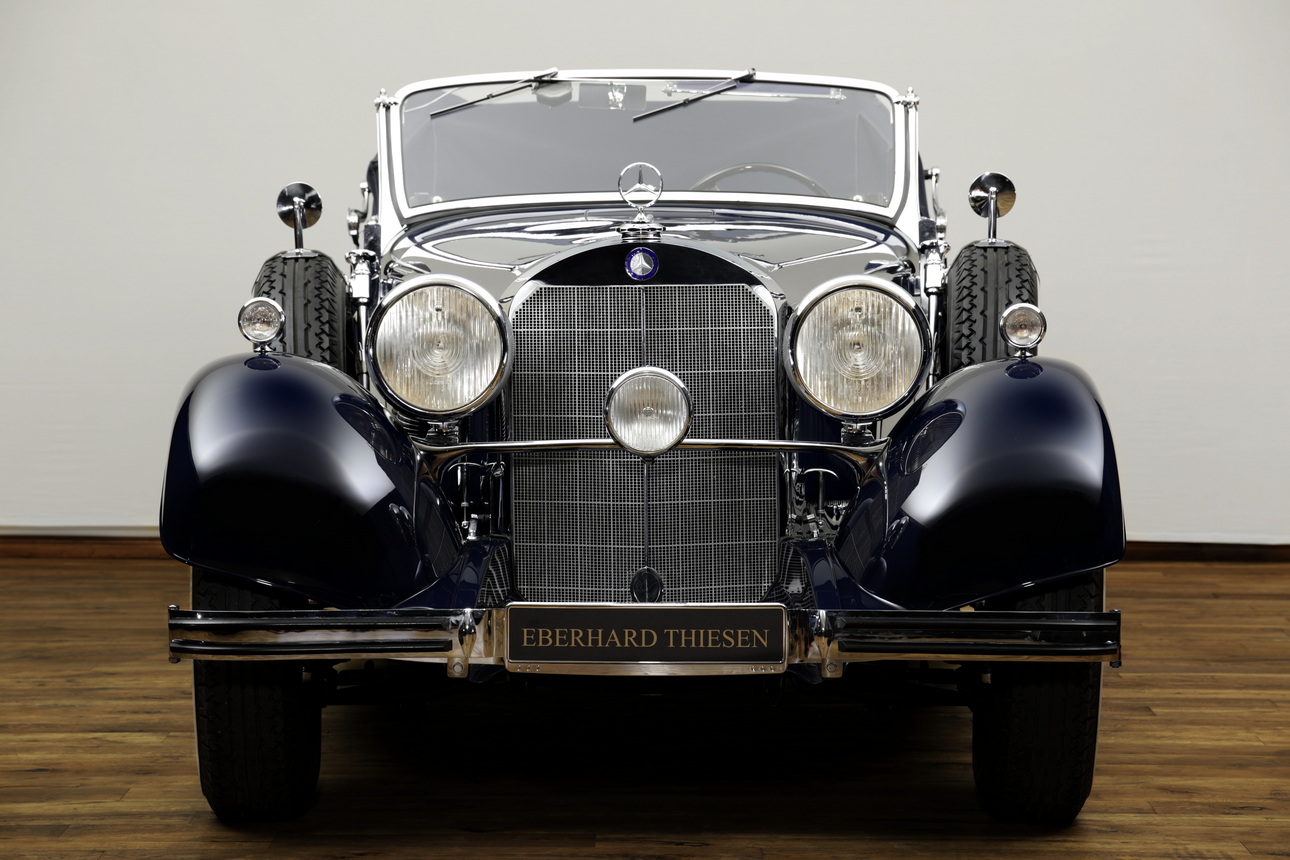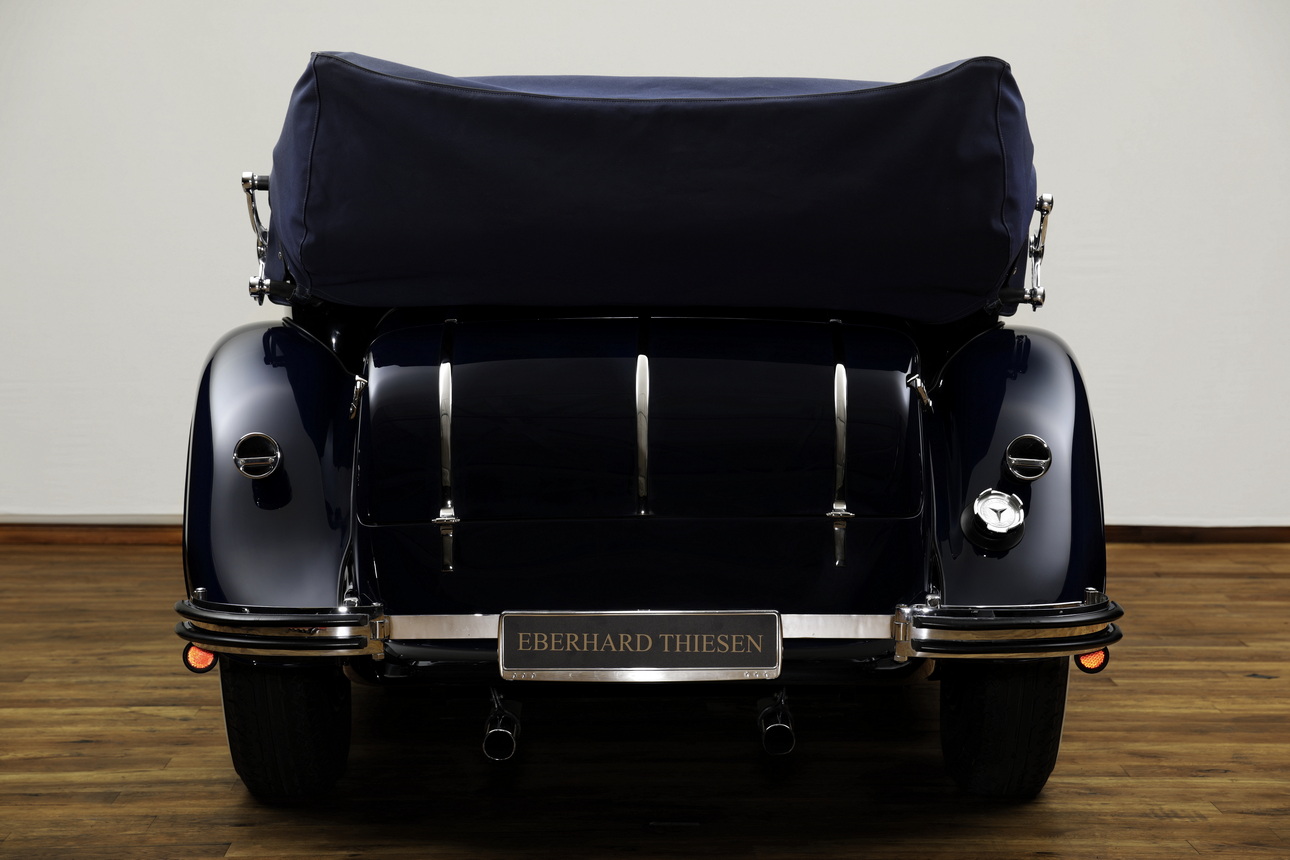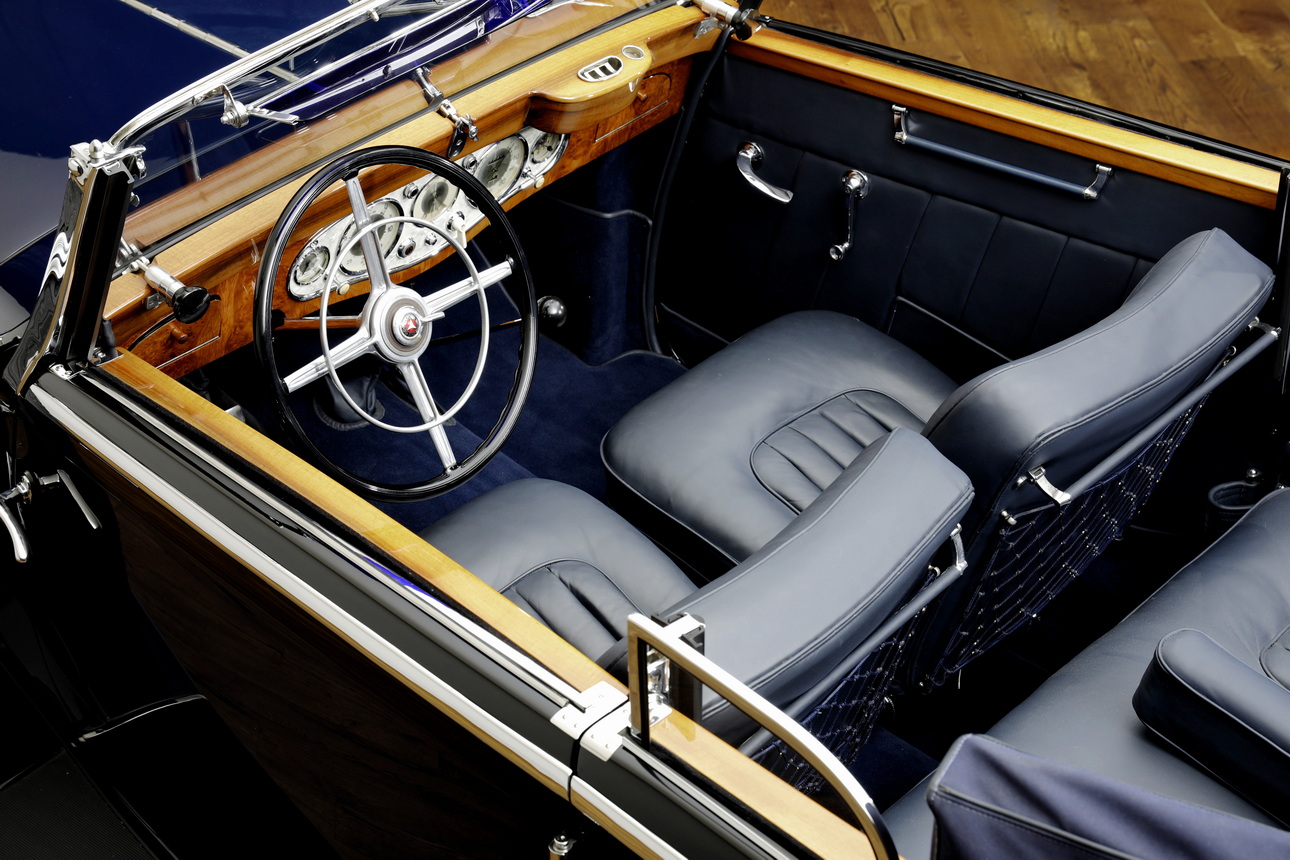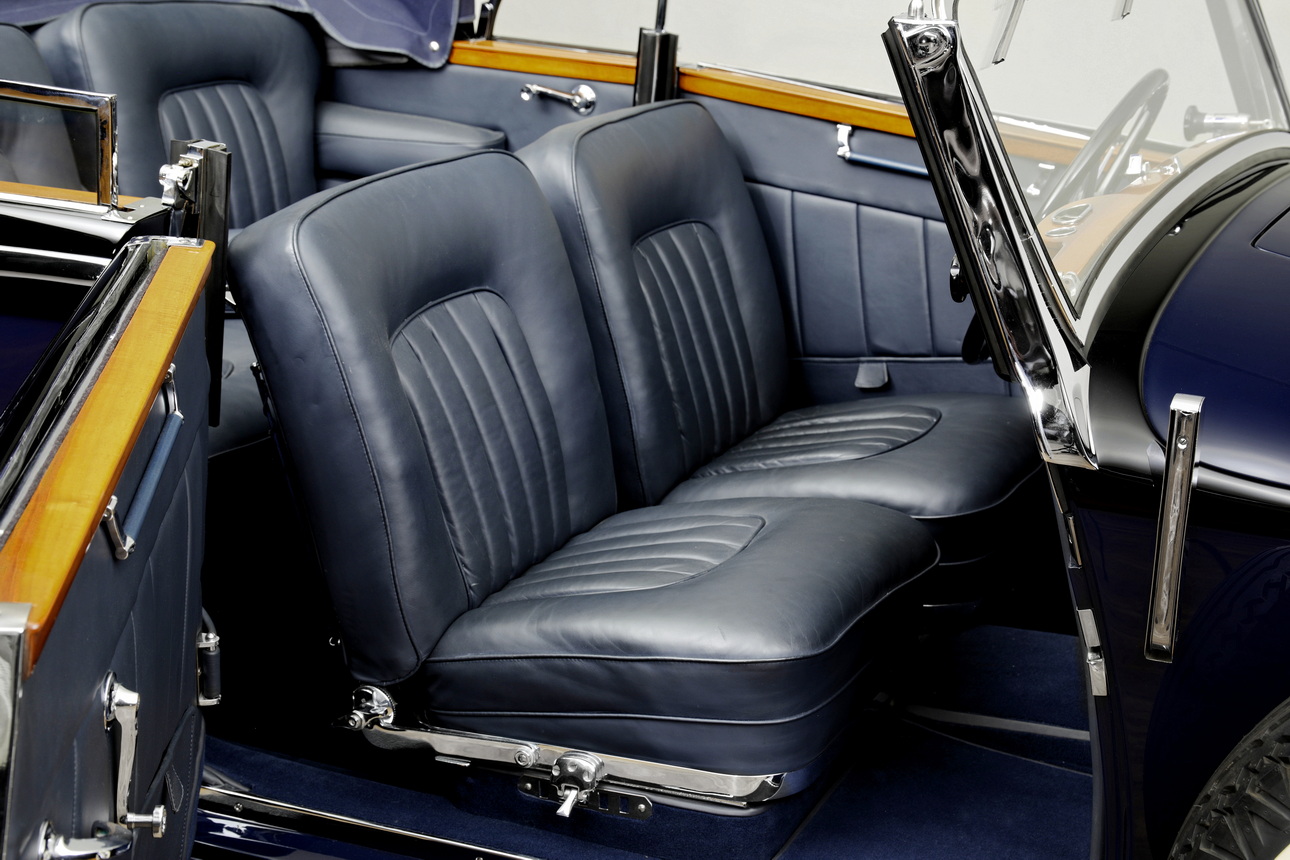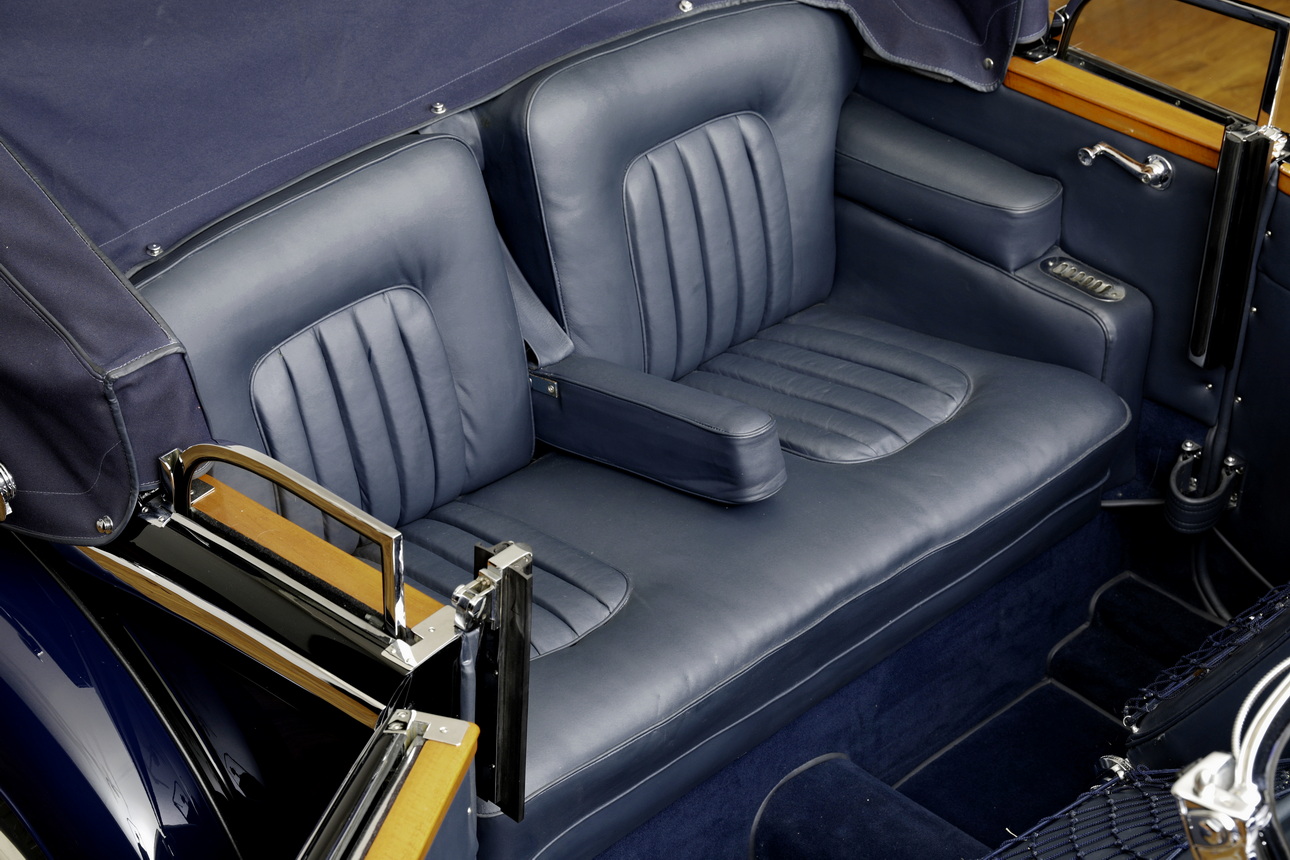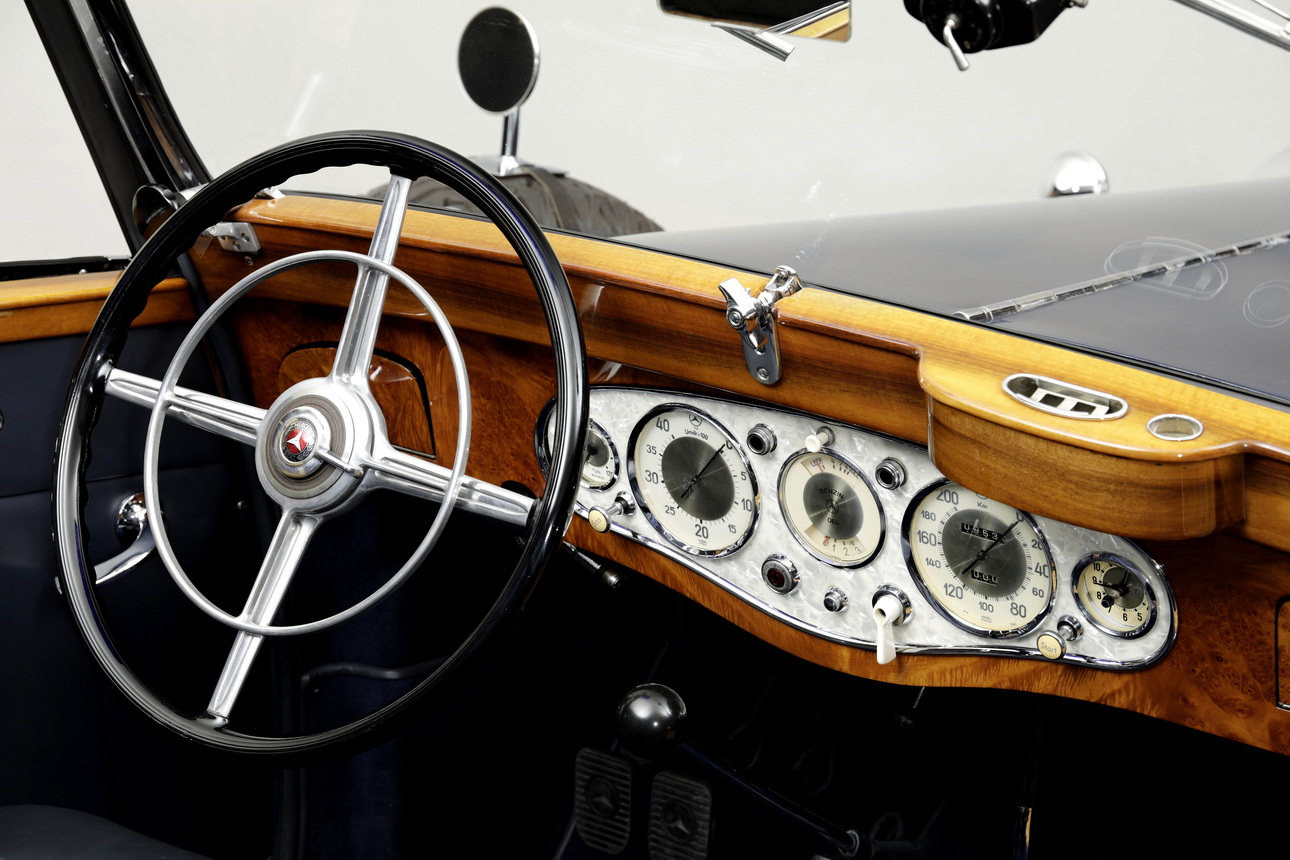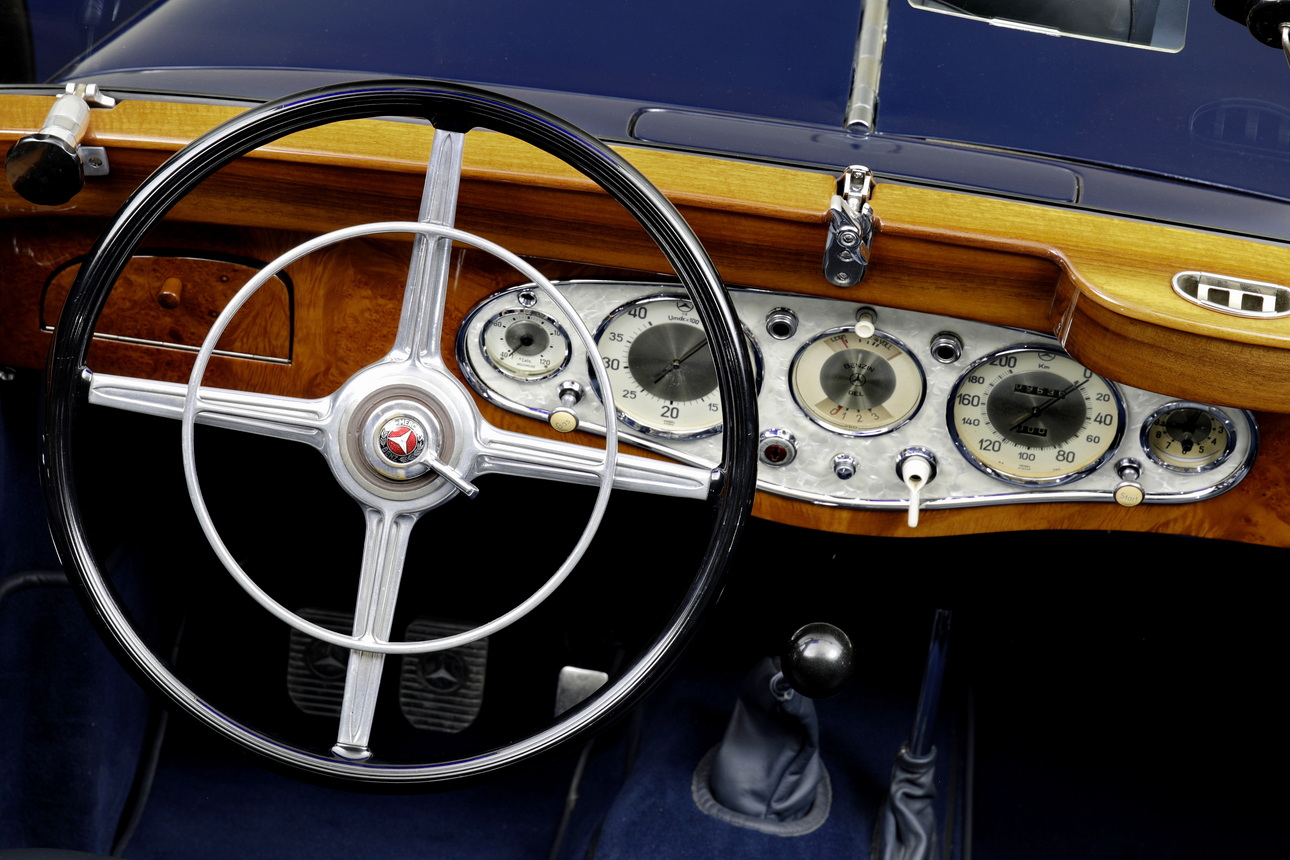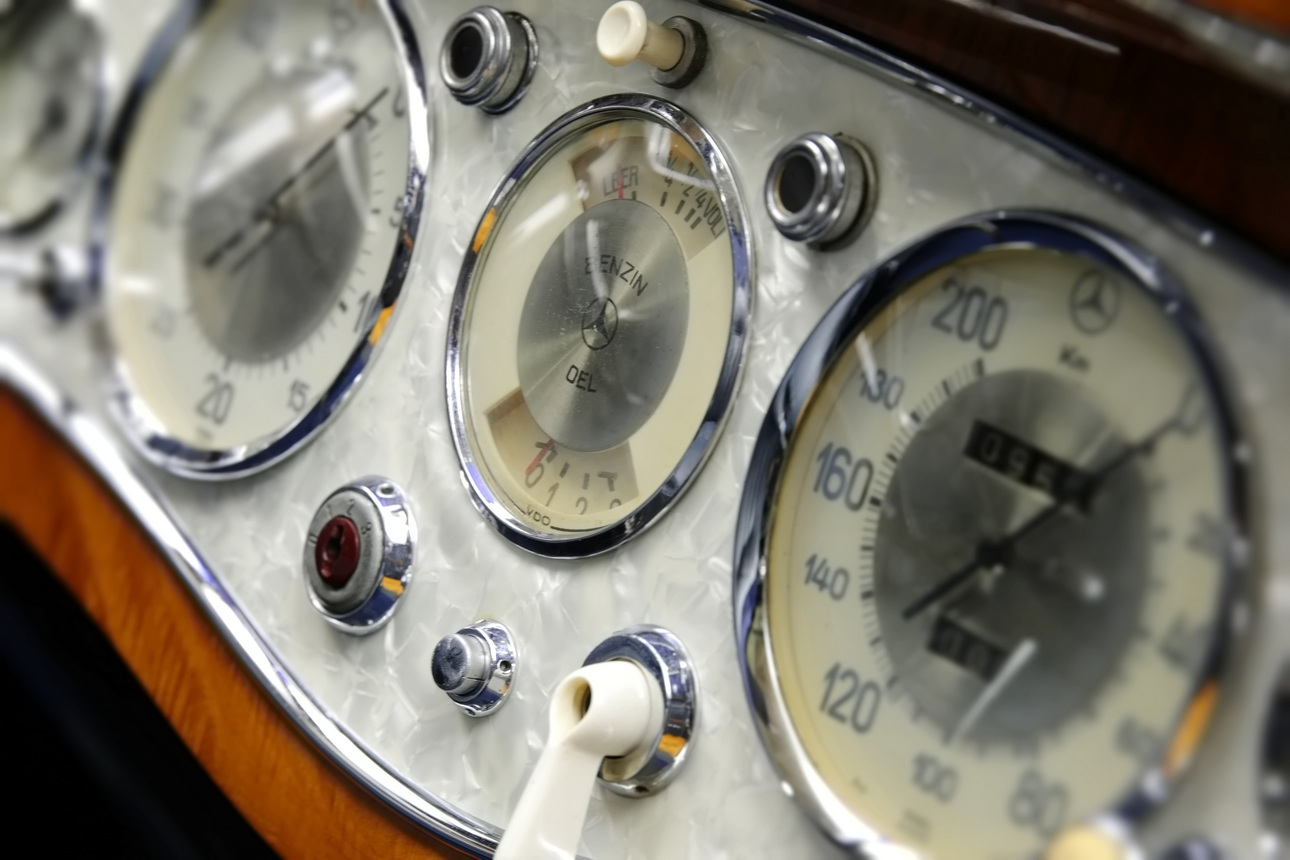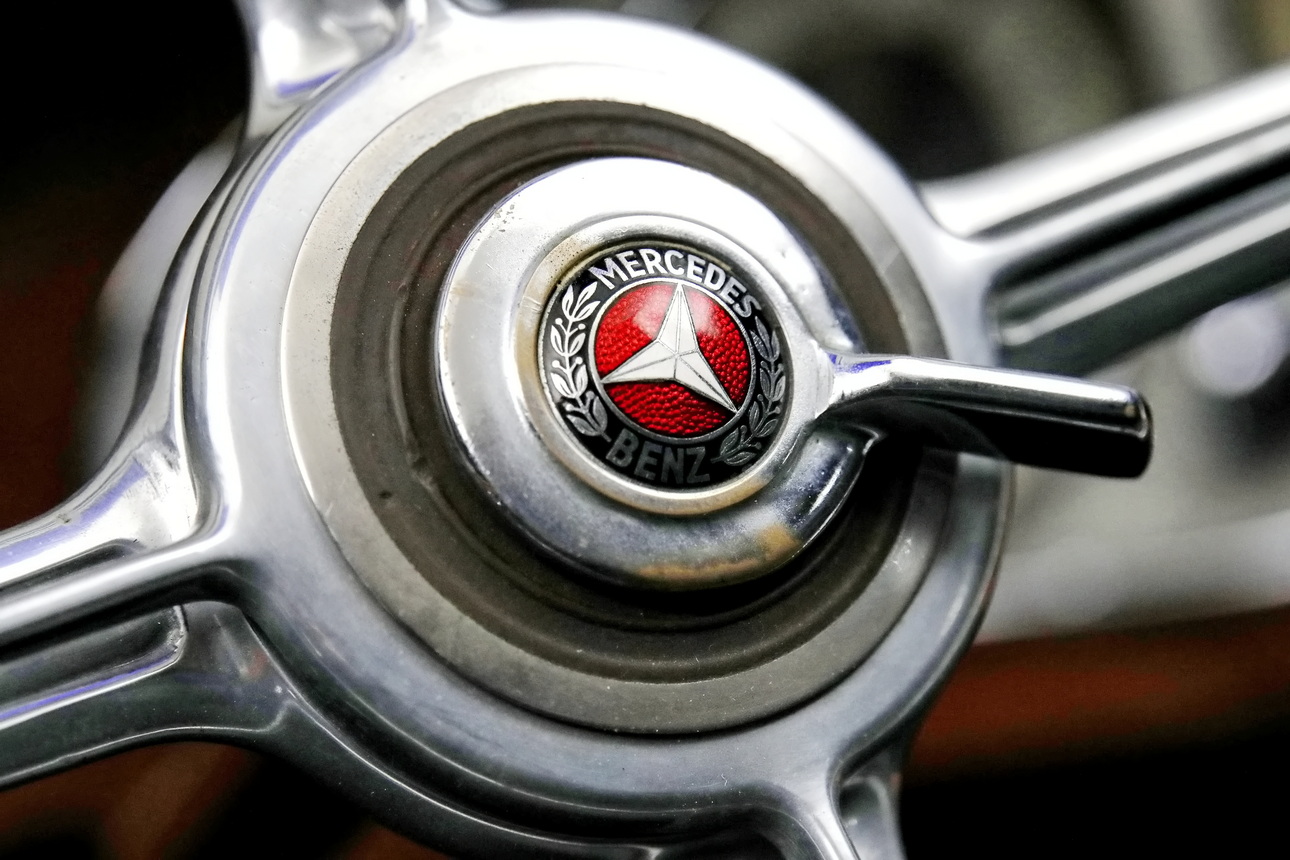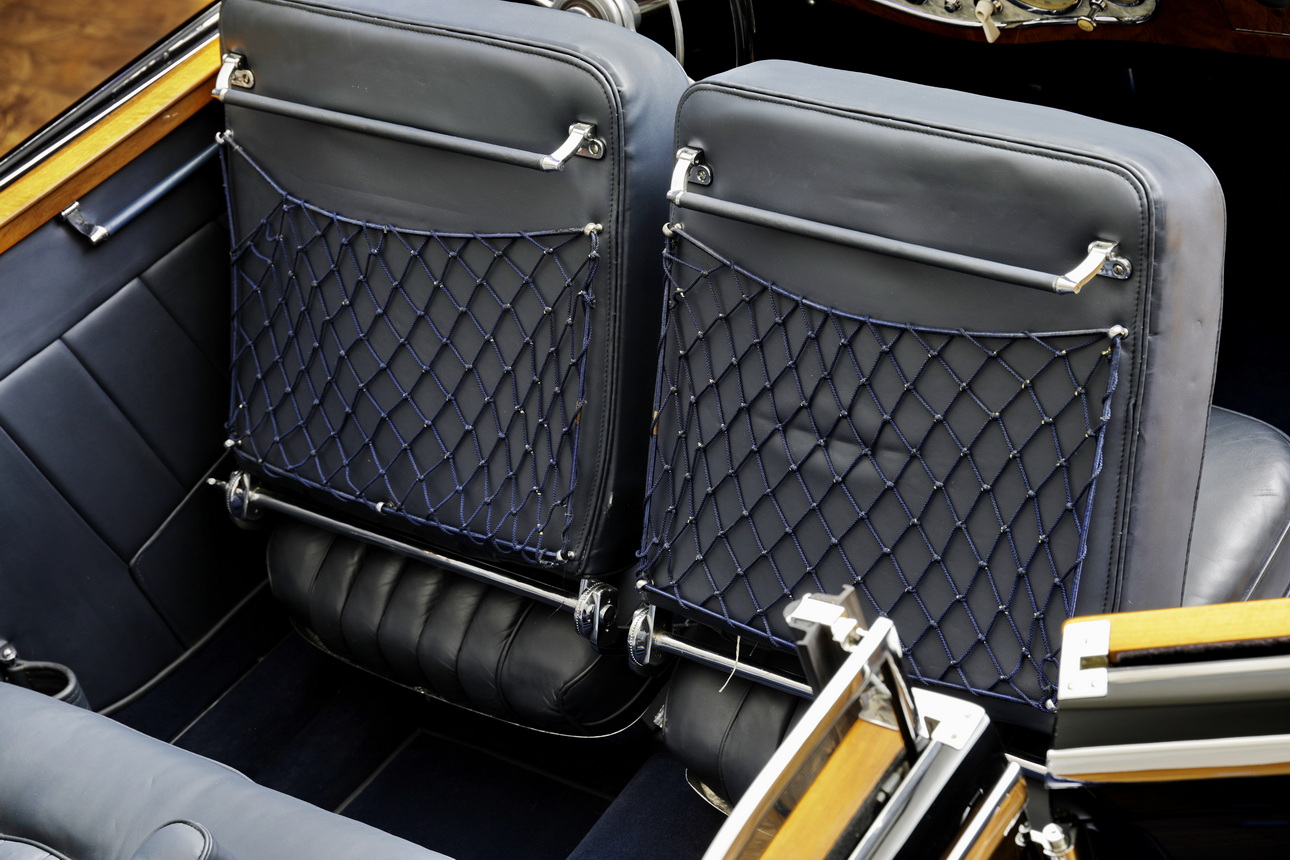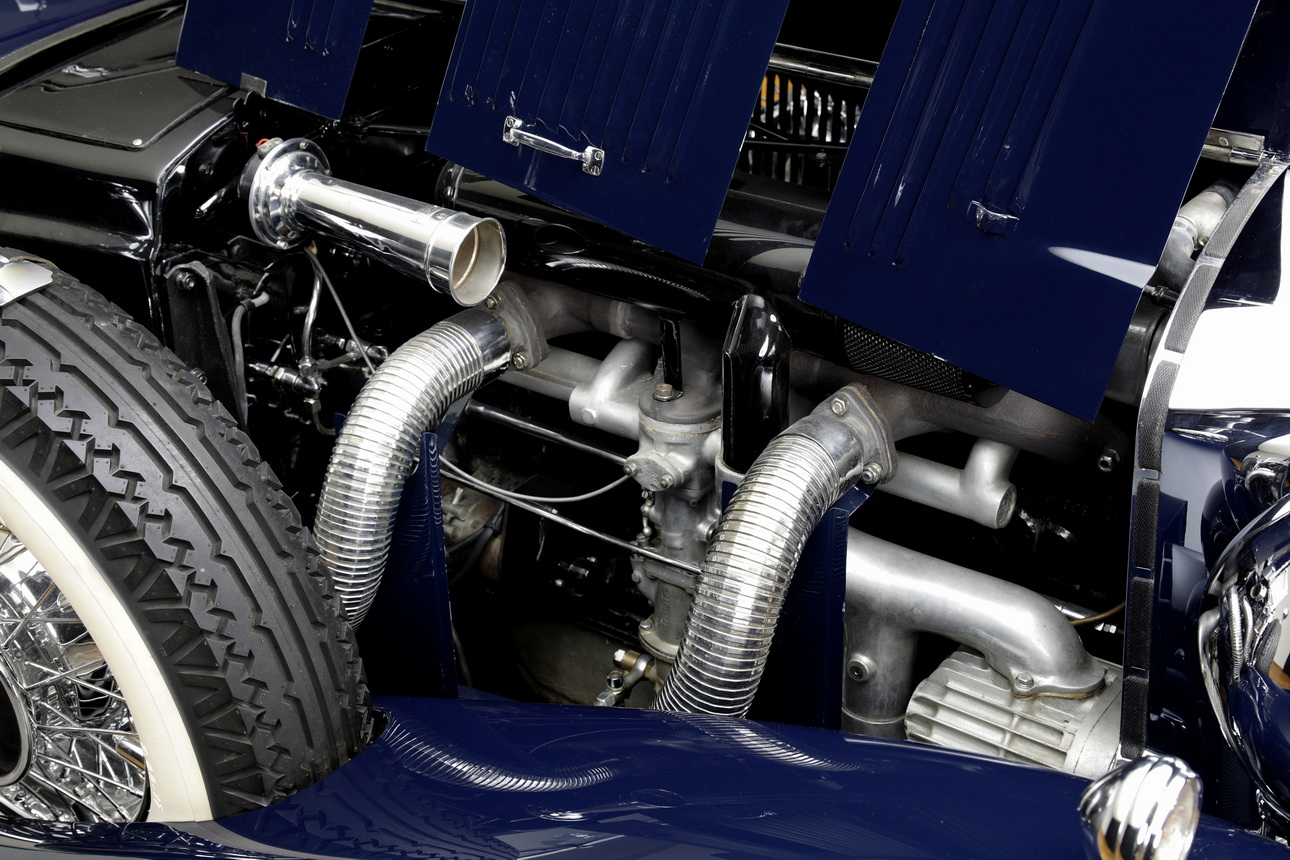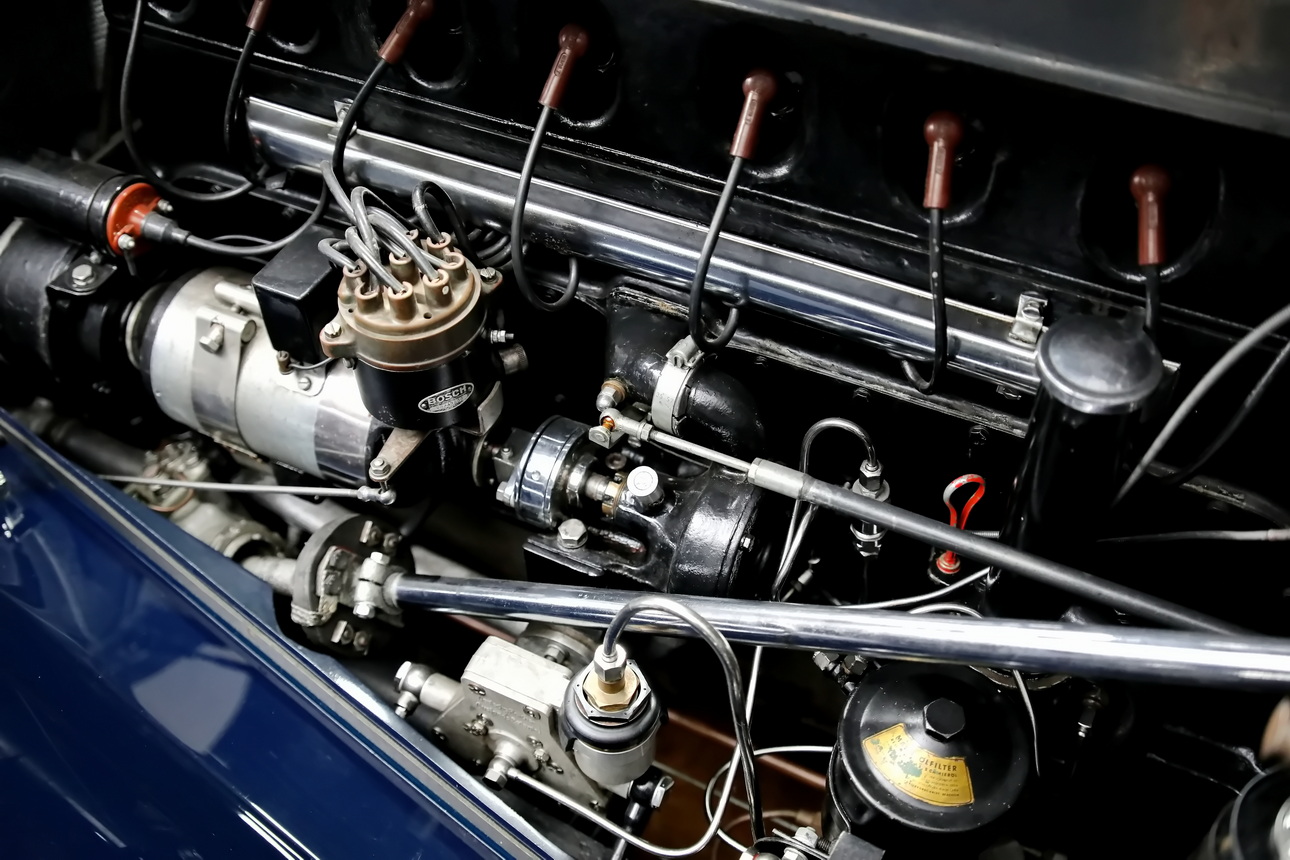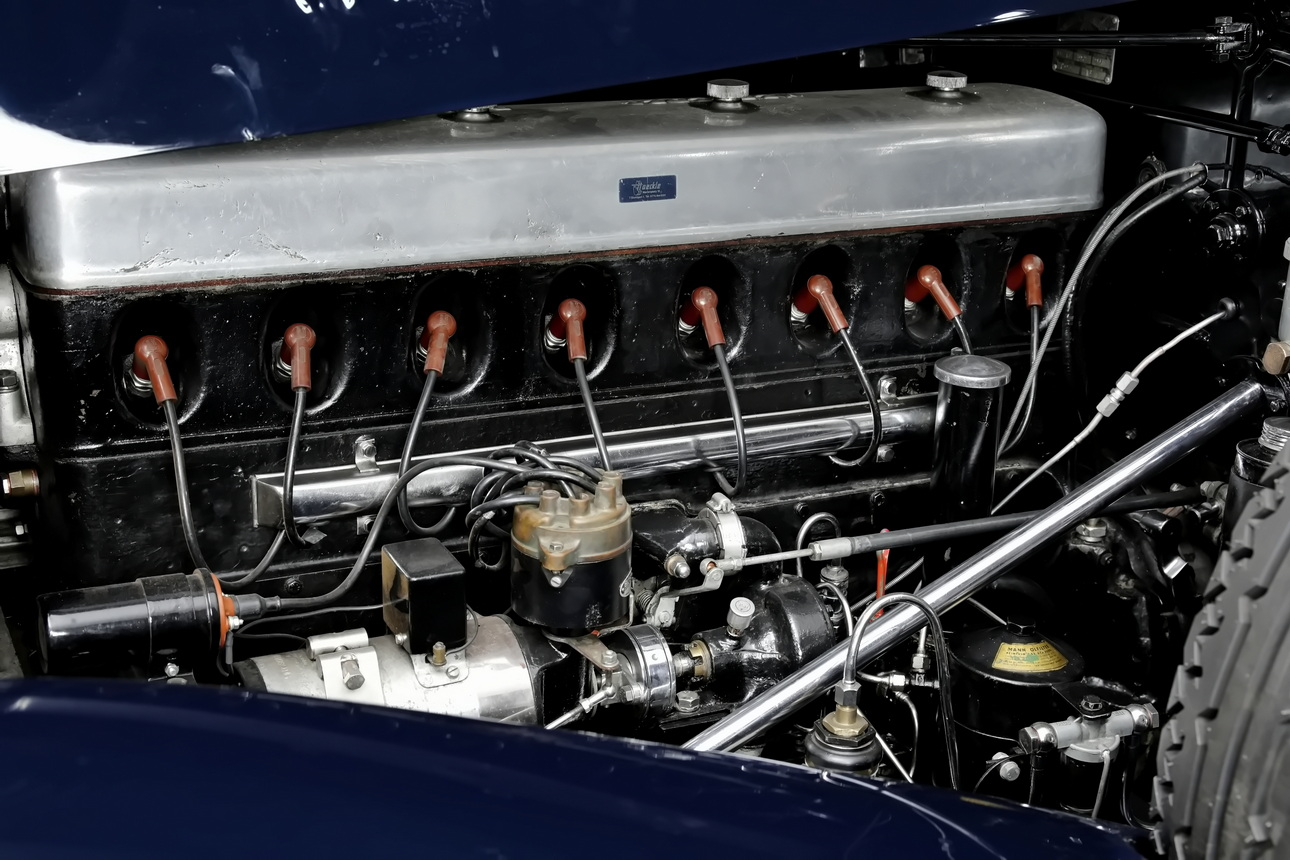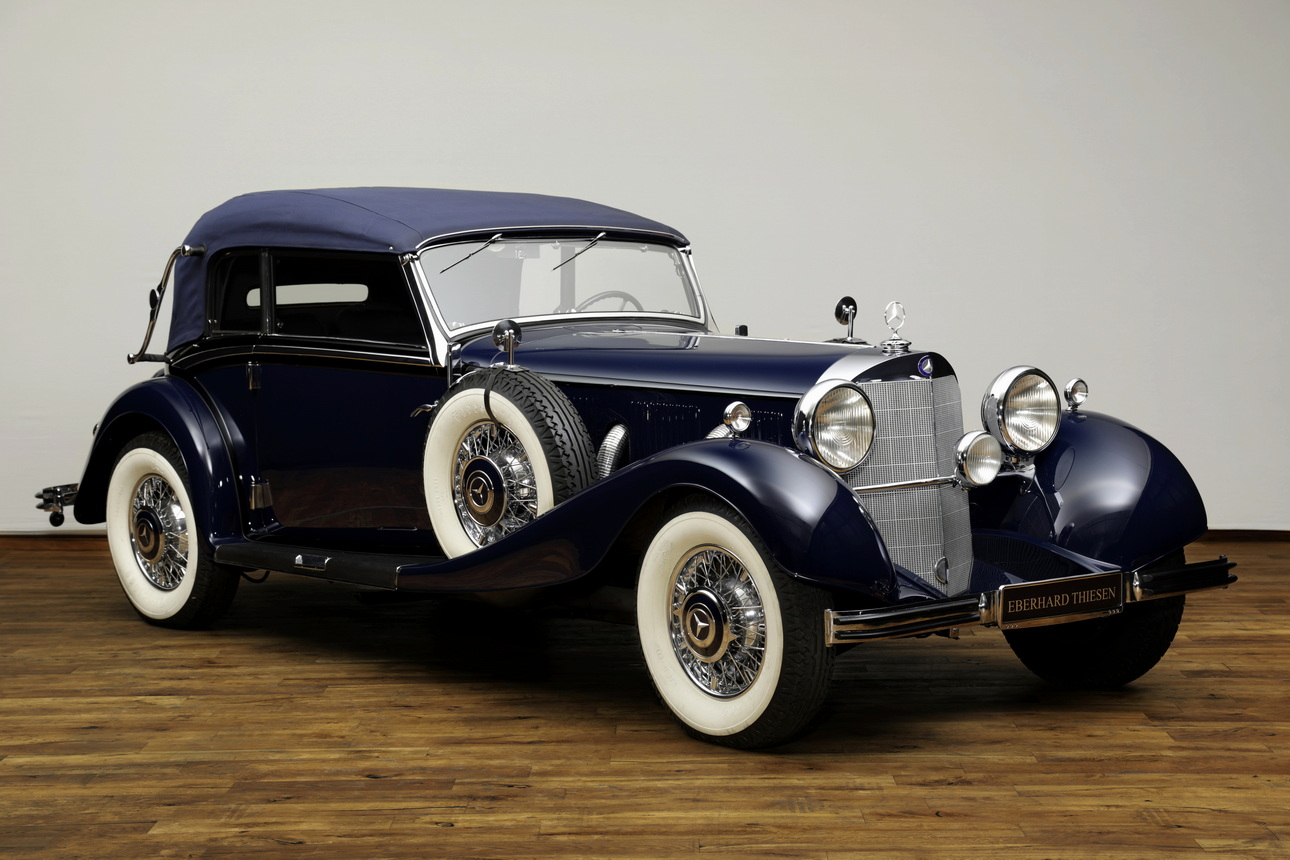Mercedes Benz 500 K Cabriolet B
Highlights
Data & Facts
This Automobile
The Mercedes Benz Type 500/540K was the ultimate in German automobiles of the 1930s and epitomised both German engineering and coachbuilding at its best.
This Mercedes Benz 500 K was manufactured as a Cabriolet B in November 1935 and delivered one month later via the Daimler-Benz sales office in Gliwice (Poland). There it was first owned by a German personality from the government at the time. Immediately after the Second World War, the car was located in Berlin. It was confiscated there by the US occupying forces and taken to the USA in 1946 as part of the reparations payments to be made, where it was placed in a museum collection. In the early 1960s, the car made its way to Austria, where it remained with its owner until the mid-1970s.
After one more owner, the car came to Germany in 2009 into the hands of an experienced dealer and expert in pre-war Mercedes Benz cars. The vehicle was then fully restored by a German restoration company in a painstaking four-year process. Restoring such vehicles is undoubtedly a challenge, but the result speaks for itself. The supercharged Mercedes was restored to its original top condition, which is still immediately recognisable today. The car subsequently had only two owners in Germany.
This Cabriolet B, which was only built 106 times, is in excellent overall condition. It is not only a contemporary witness to German automobile history, but also an impressive example of the craftsmanship and dedication that go into the restoration of such vehicles. A confirmation from Mercedes Benz regarding the delivery specification (commission book) from 1935 is available. Now this beautiful supercharged Mercedes is ready for the next era in the hands of a passionate collector.
Model History
Mercedes Benz's discerning clientele soon became dissatisfied with the performance of the 380 model (1933-1934), particularly because they had come to appreciate the large-volume and powerful models of the previous Mercedes "S" family (S, SS and SSK). In 1934, Mercedes quickly developed the subsequent 500 K (W29 series) from the 380, the official designation of which was initially "Type 500 with supercharger".
Its new engine with switchable Roots supercharger now had a displacement of 5 litres and the engine output was then 100 hp without and 160 hp with the supercharger. The achievable top speed was 160 kph. The modification of the engine was extensive and also required a new crankshaft. A high-speed gearbox with semi-automatic shifting was used for the 500 K transmission. The clutch did not need to be operated when shifting from third (direct) gear to high gear.
The 500 K made its debut at the International Automobile and Motorcycle Exhibition (IAMA) in Berlin in a spectacular version as a so-called "Autobahnkurier", which was designed in a "single special version" for high speed distances. The 500 K was available in seven body variants: in addition to the chassis, a 4-door saloon, still called the "Innenlenker" at the time, a 2-seater roadster with two emergency seats, the convertibles A, B and C and a 2-door open touring car. Moreover, it was also possible to order tailor-made one-off bodies based on a "rolling chassis".
Even if the quantities seem like series production, these vehicles were largely customised and handcrafted in a manufactory-like production process. With the bodies for the eight-cylinder cars, the Sindelfingen special coachbuilders achieved a generally well recognised level of beauty and quality of workmanship that could hardly be surpassed. In total, only 342 units of the 500 K were produced from 1934 to 1936, before the engine was enlarged again and the 540 K succeeded it. Source: Mercedes Benz Public Archive
This Automobile
The Mercedes Benz Type 500/540K was the ultimate in German automobiles of the 1930s and epitomised both German engineering and coachbuilding at its best.
This Mercedes Benz 500 K was manufactured as a Cabriolet B in November 1935 and delivered one month later via the Daimler-Benz sales office in Gliwice (Poland). There it was first owned by a German personality from the government at the time. Immediately after the Second World War, the car was located in Berlin. It was confiscated there by the US occupying forces and taken to the USA in 1946 as part of the reparations payments to be made, where it was placed in a museum collection. In the early 1960s, the car made its way to Austria, where it remained with its owner until the mid-1970s.
After one more owner, the car came to Germany in 2009 into the hands of an experienced dealer and expert in pre-war Mercedes Benz cars. The vehicle was then fully restored by a German restoration company in a painstaking four-year process. Restoring such vehicles is undoubtedly a challenge, but the result speaks for itself. The supercharged Mercedes was restored to its original top condition, which is still immediately recognisable today. The car subsequently had only two owners in Germany.
This Cabriolet B, which was only built 106 times, is in excellent overall condition. It is not only a contemporary witness to German automobile history, but also an impressive example of the craftsmanship and dedication that go into the restoration of such vehicles. A confirmation from Mercedes Benz regarding the delivery specification (commission book) from 1935 is available. Now this beautiful supercharged Mercedes is ready for the next era in the hands of a passionate collector.
Model History
Mercedes Benz's discerning clientele soon became dissatisfied with the performance of the 380 model (1933-1934), particularly because they had come to appreciate the large-volume and powerful models of the previous Mercedes "S" family (S, SS and SSK). In 1934, Mercedes quickly developed the subsequent 500 K (W29 series) from the 380, the official designation of which was initially "Type 500 with supercharger".
Its new engine with switchable Roots supercharger now had a displacement of 5 litres and the engine output was then 100 hp without and 160 hp with the supercharger. The achievable top speed was 160 kph. The modification of the engine was extensive and also required a new crankshaft. A high-speed gearbox with semi-automatic shifting was used for the 500 K transmission. The clutch did not need to be operated when shifting from third (direct) gear to high gear.
The 500 K made its debut at the International Automobile and Motorcycle Exhibition (IAMA) in Berlin in a spectacular version as a so-called "Autobahnkurier", which was designed in a "single special version" for high speed distances. The 500 K was available in seven body variants: in addition to the chassis, a 4-door saloon, still called the "Innenlenker" at the time, a 2-seater roadster with two emergency seats, the convertibles A, B and C and a 2-door open touring car. Moreover, it was also possible to order tailor-made one-off bodies based on a "rolling chassis".
Even if the quantities seem like series production, these vehicles were largely customised and handcrafted in a manufactory-like production process. With the bodies for the eight-cylinder cars, the Sindelfingen special coachbuilders achieved a generally well recognised level of beauty and quality of workmanship that could hardly be surpassed. In total, only 342 units of the 500 K were produced from 1934 to 1936, before the engine was enlarged again and the 540 K succeeded it. Source: Mercedes Benz Public Archive
